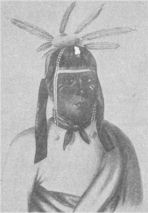Miami Tribe
Miami Indians (Chippewa: Omaumeg, ‘people who live on the peninsula’). An Algonquian tribe, usually designated by early English writers as Twightwees (twanhtwanh, the cry of a crane. Hewitt), from their own name, the earliest recorded notice of which is from information furnished in 1658 by Gabriel Druillettes who called them the Oumamik, then living 60 leagues froth St. Michel, the first village of the Pottawatomi mentioned by him; it, was therefore at or about the mouth of Green Bay, Wisconsin. Tailhan (Perrot, Mémoire) says that they withdrew into the Mississippi valley, 60 leagues from the bay, and were established there … Read more


